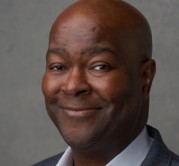Six ways to turn DEI ideals into action
A diversity statement is just the beginning of the journey.

After George Floyd was killed in May while handcuffed and pinned to the ground by a police officer’s knee, CUES and many other organizations committed to fighting racial injustice. But as I’ve said previously, truly addressing the problem of racism is going to take more than a statement. It’s going to take a lot of hard work.
Because of this, as CUES verbally committed to fight racial injustice, we also committed to turning our ideals into action. Here’s what that looks like for us so far.
Last month, we announced we would provide complimentary CUES memberships and all the accompanying professional development benefits to participants in the African-American Credit Union Coalition’s mentorship program.
This month we welcome to the CUES Board of Directors CUES members Mark Robnett, CCE, President/CEO of $868 million Justice Federal Credit Union, Chantilly, Virginia, and Richard Romero, President/CEO of $896 million Seattle Credit Union, Seattle. Along with fresh perspective, these two CEOs will bring their expertise, wealth of knowledge, and leadership experience to the CUES boardroom and also increase the overall diversity of what has historically been a gender-diverse board.
In January, we’ll launch a new, quarterly e-newsletter focused on diversity, equity and inclusion. And, in February, in partnership with Cornell University, we’re offering an online certificate program in DEI. Starting with a look at employee engagement, then identifying interventions surrounding unconscious bias and specific diversity and inclusion strategies, this program is appropriate for anyone committed to going beyond mere compliance to build a truly aware and inclusive work culture.
You, too, can turn your ideals about diversity into action. Here are six steps to take:
- Consider how you are treating diversity in your membership. Some Vermont credit unions are taking a hard look at their underwriting practices, for example. Other credit unions are going beyond marketing to people who speak Spanish and instead asking themselves how they can better serve Hispanic members.
- Read the research. Knowing the facts will help you create a business case for doing the right thing. Time and again, researchers find that companies with more diversity perform better.
- Treat internal training as part of an overall effort to root out unconscious bias. Research suggests that training has a role to play in raising awareness. But on its own, it may not be enough to fully eliminate injustice in an organization. You can set up diversity training at your credit union for success by being clear about your objectives, delivering training to groups of people who know each other, and using before-and-after measures to assess changes. The success of your diversity training program must be supplemented by simultaneously looking critically at your organizational structures, policies and procedures.
- Broaden where you post your available positions. A great first step toward getting more diversity in your talent pipeline is to broadcast your job ads in different ways. Consider recruiting at historically black colleges and universities and reaching out to the National Black MBA Association, the National Association of African Americans in Human Resources, and the National Association of Black Accountants. If you look in the right places, the talent is there.
- Apply these same recruitment ideas when setting up internal teams. What language are you using to describe the work of new and existing teams? Does a team’s name discourage diversity? Would your teams reap the benefits of diversity if you restructured your process for selecting team members?
- Celebrate differences. For example, tablet maker Bak USA got press for hosting popular monthly potlucks where employees brought dishes from their home countries to share. In-person potlucks aren’t a recommended practice during the current pandemic, but you get the idea.
Responding to racism will be a journey. Add sexism, ageism and all the other ways that people discriminate against one another, and we’ve got our work cut out for us. But it’s necessary and worthy work. And we’re in this together. Please let me know how the steps above work for you. If you attend our Diversity, Equity, and Inclusion Cornell Certificate Program, please let me know what you think. I’d also like to hear about additional things that you’re trying and finding successful.

